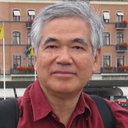Comparative in vitro antitumor activity of homoharringtonine and harringtonine against clonogenic human tumor cells.
Keywords
Abstract
Harringtonine and its derivative homoharringtonine are ester-containing anti-leukemic alkaloids isolated from the tree Cephalotaxus harringtonia. In order to compare their antitumor activity against solid tumors, in vitro culture of fresh tumor cells from 23 patients was carried out with a soft agar assay system. Tumor cells were exposed to 0.001-1.0 micrograms/ml of each agent for either 1 h prior to plating or by continuous exposure. Significant antitumor activity was noted for harringtonine in ovarian and endometrial carcinoma at the 0.01 micrograms/ml concentration. In the continuous exposure studies, homoharringtonine proved to be more potent than harringtonine. Significant antitumor activity of homoharringtonine was noted in sarcoma and breast cancer as well as in ovarian and endometrial carcinoma. In the continuous exposure studies the mean area under the survival-concentration curve was significantly less for homoharringtonine than for harringtonine (5.04 +/- 3.87 and 6.15 +/- 3.46, respectively (p less than 0.005). The ratio of mean ID50 (harringtonine/homoharringtonine) was 5.2. However, there was no significant difference between those two agents with a 1 h exposure. Our results suggest that homoharringtonine and harringtonine may be of use in selected solid tumors, and that homoharringtonine has a greater degree of colony inhibition with continuous exposure.


